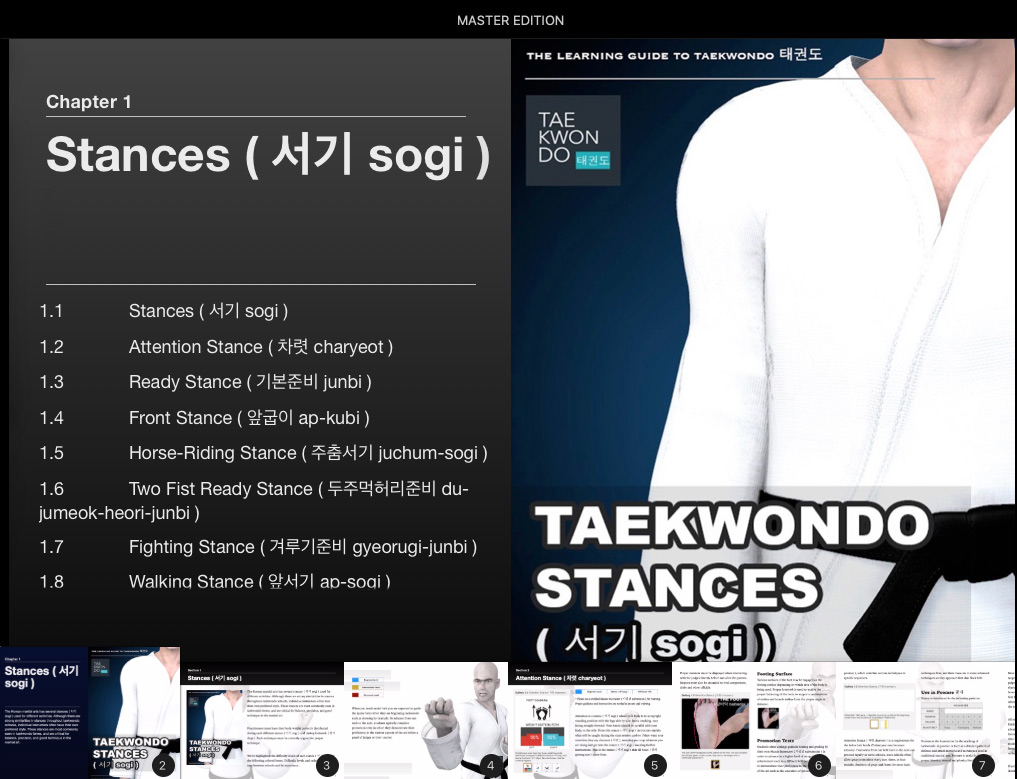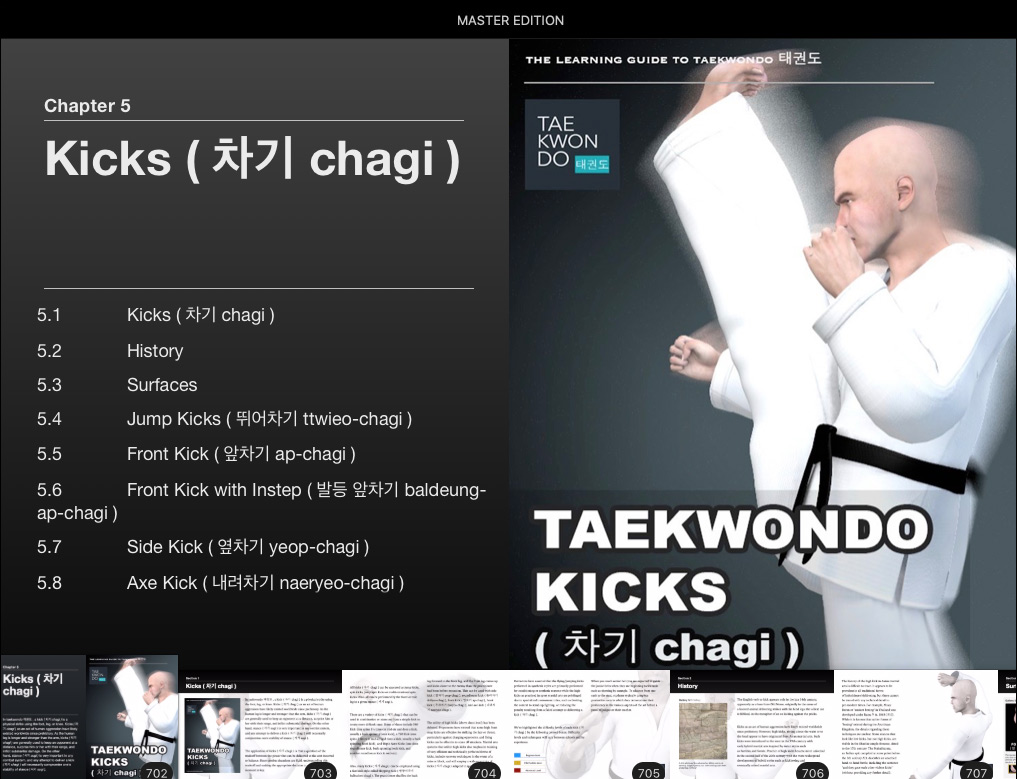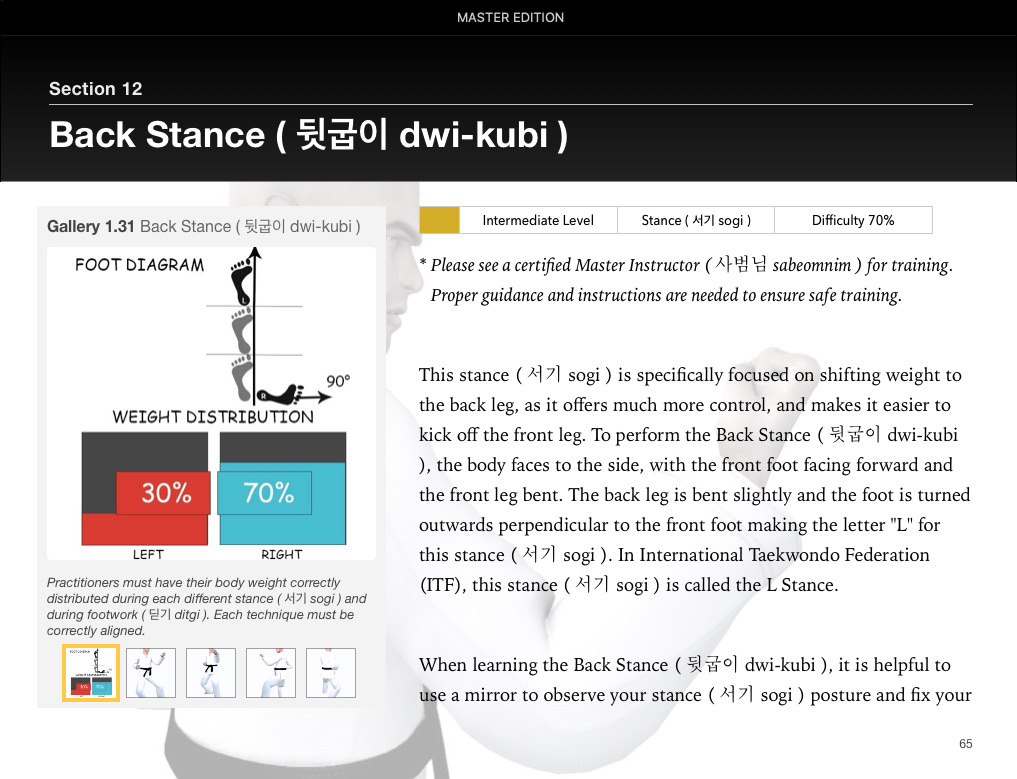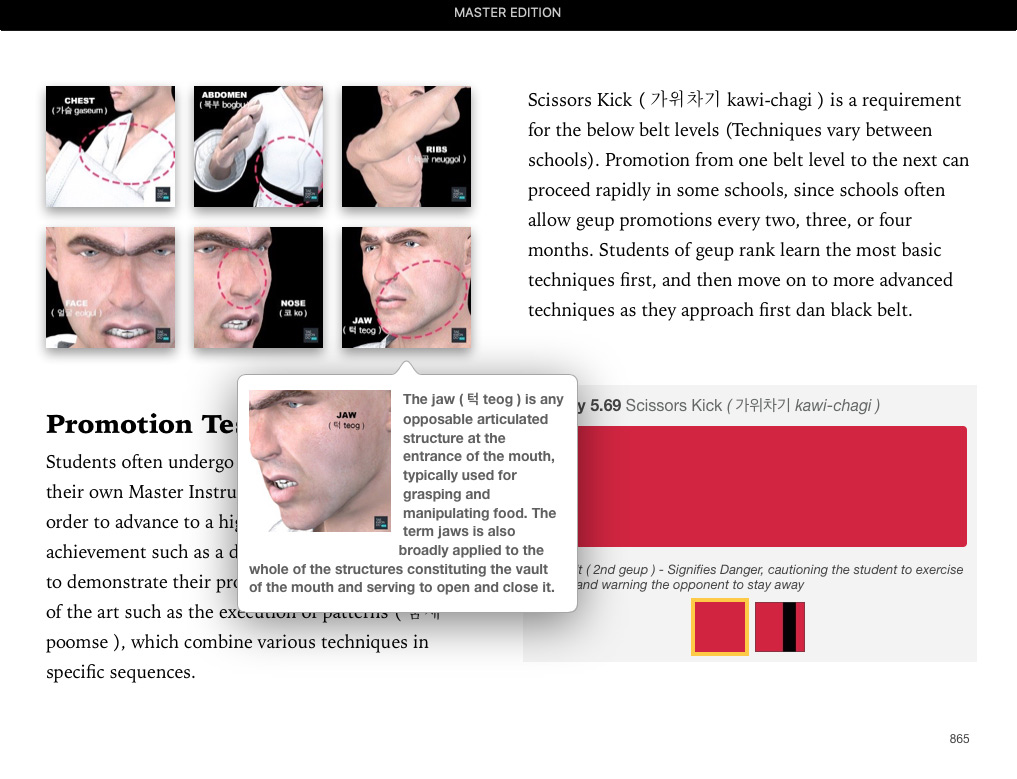Taekwondo 태권도Taekwondo Preschool
Promotion from one geup to the next can proceed rapidly in some schools, since schools often allow geup promotions every two, three, or four months. Students of geup rank learn the most basic techniques first, and then move on to more advanced techniques as they approach first dan. Many of the older and more traditional schools often take longer to allow students to test for higher ranks than newer, more contemporary schools, as they may not have the required testing intervals. View Taekwondo belt levels »

Taekwondo Patch
When you reach senior belt you are expected to guide the junior belts when they are beginning Taekwondo such as showing by example.
Patches are usually made from textile and they are commonly attached to the taekwondo uniform ( 도복 dobok ). The school patch is usually worn on the left side of the chest while other patches such as flags could be worn on the side of the arm.

Training Safety Precautions
Starting with coloured belts taekwondo students must learn Breaking ( 격파 gyeokpa ). As they progress through the ranks, the breaks they perform increase in difficulty as do the number of boards. Wooden boards are the most common breaking item in most martial arts.
There are safety concerns with taekwondo breaking ( 격파 gyeokpa ), so one should seek out a certified Master Instructor ( 사범님 sabeomnim ). There are many small bones of the foot ( 발 bal ) and hand ( 손 son ) which need to be very carefully and slowly conditioned for safety. Repeated damage to the extensor capsules of the knuckles can lead to long term problems with dexterity. View Breaking ( 격파 gyeokpa ) »
* Please see a certified Master Instructor ( 사범님 sabeomnim ) for training. Proper guidance and instructions are needed to ensure safe training.
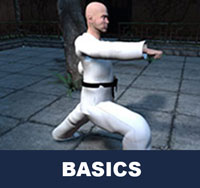
Taekwondo Basics
Here is where you can learn more about Taekwondo 태권도. Knowing the fundamental basics is very important for your learning path as you build your skills and knowledge. There are certain rules that need to be followed to show respect to the master ( 사범님 sabeomnim ), the instructors ( 교사님 gyosannim ), other practitioners and to the martial arts. They vary between schools but many have similar rules and guidelines. For more information View Taekwondo Basics »
There are five tenets defined in the International Taekwondo Federation (ITF) and several more in World Taekwondo (WT).
Integrity ( 염치 yeom-chi ): "Although it may be similar, this form of integrity takes on a more wider role then defined in the common dictionary. In taekwondo, integrity means not only to determine what is right or wrong but also having the conscience to feel guilt if one has done wrong and to have the integrity stand up for what is right." View Taekwondo Tenets »
RESOURCES
This article uses material from the Wikipedia article "Dobok", which is released under the Creative Commons Attribution-Share-Alike License 3.0.




